The AWS Cloud Practitioner Study and Exam Experience
On the 13th November 2020 I wrote the AWS Cloud Practitioner exam. This blog is a review of the study and exam experience, including Stephane Maarek’s Ultimate AWS Certified Cloud Practitioner – 2020 course on Udemy.
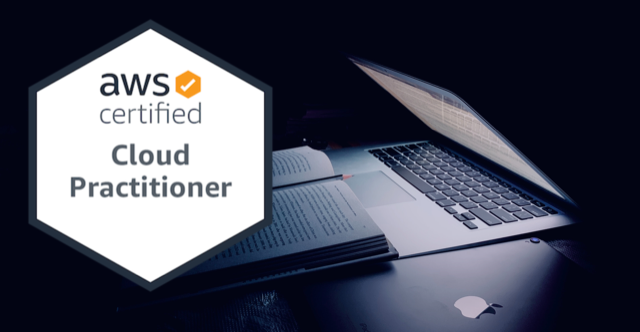
On the 13th November 2020 I wrote the AWS Cloud Practitioner exam. This blog is a review of the study and exam experience, including Stephane Maarek’s Ultimate AWS Certified Cloud Practitioner – 2020 course on Udemy.
Introduction
Over the last two years I have had the opportunity to incrementally work with AWS and its related services. The organization I currently work for has used AWS services in an ad hoc fashion over a period of time but has recently decided to adopt AWS as their primary cloud provider. The organization is in the early stages of a full AWS migration from a private cloud provider with the goal of having all its services hosted on AWS by early to mid 2021.
This migration and ongoing optimization have provided me the opportunity to embrace the importance of upskilling that will be required to be comfortable working in a new environment without being overwhelmed by a new paradigm of services and processes.
In 2019 I was given the opportunity to participate in a three-day AWS Sysop Associate Course. At the time, I had very little AWS experience and did not yet feel comfortable to write the exam that accompanied the course and wanted to gain more experience before attempting any certification. As time went by and I gained more experience and became more comfortable with AWS, I decided to begin studying for my first AWS certification: The AWS Cloud Practitioner.
What is The AWS Cloud Practitioner Certification?
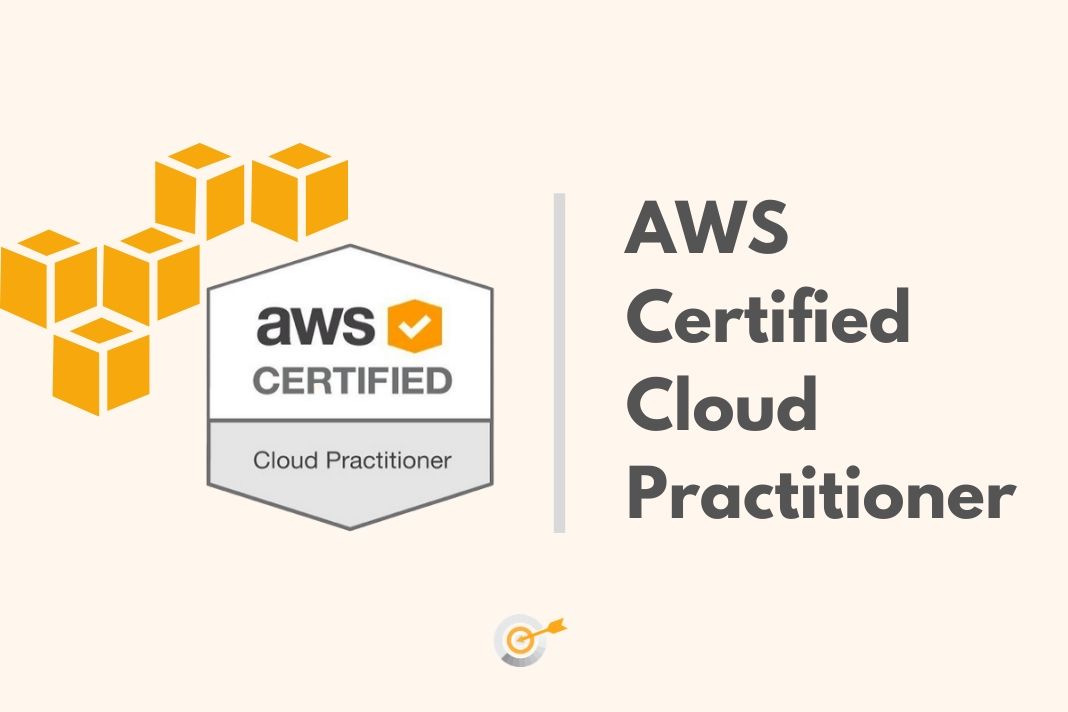
The AWS Cloud Practitioner Certification is the entry level certification and an introduction to AWS service offerings and public cloud concepts. AWS recommends having at least six months of experience in any role before attempting the certification. I would agree with this, adding that it would be important for the certification candidate to also create their own personal AWS account. This allows them to explore services on their own without the concern of allocating resources on an account that does not belong to them. AWS has an array of free tier services for candidates to utilize, keeping costs controlled as they become comfortable with the core service offerings.
What does The AWS Cloud Practitioner Certification cover?
As this is an entry level certification, the concepts covered can be understood to be the core fundamentals of AWS. These concepts are the following:
1. A definition of the AWS Cloud and its basic global infrastructure
2. Basic AWS Cloud architectural principles
3. The AWS Cloud value proposition
4. Key services on the AWS platform and their common use cases
5. Basic security and compliance aspects of the AWS platform
6. Billing, account management and pricing models
7. Documentation and technical assistance
8. Core characteristics of deploying and operating in the AWS Cloud
Having a decent grasp of these fundamentals is important to being comfortable with the more advanced approaches that any AWS engineer will eventually encounter whether it be in a professional environment or if their ambition is to continue with associate and professional certifications.
The Study Experience
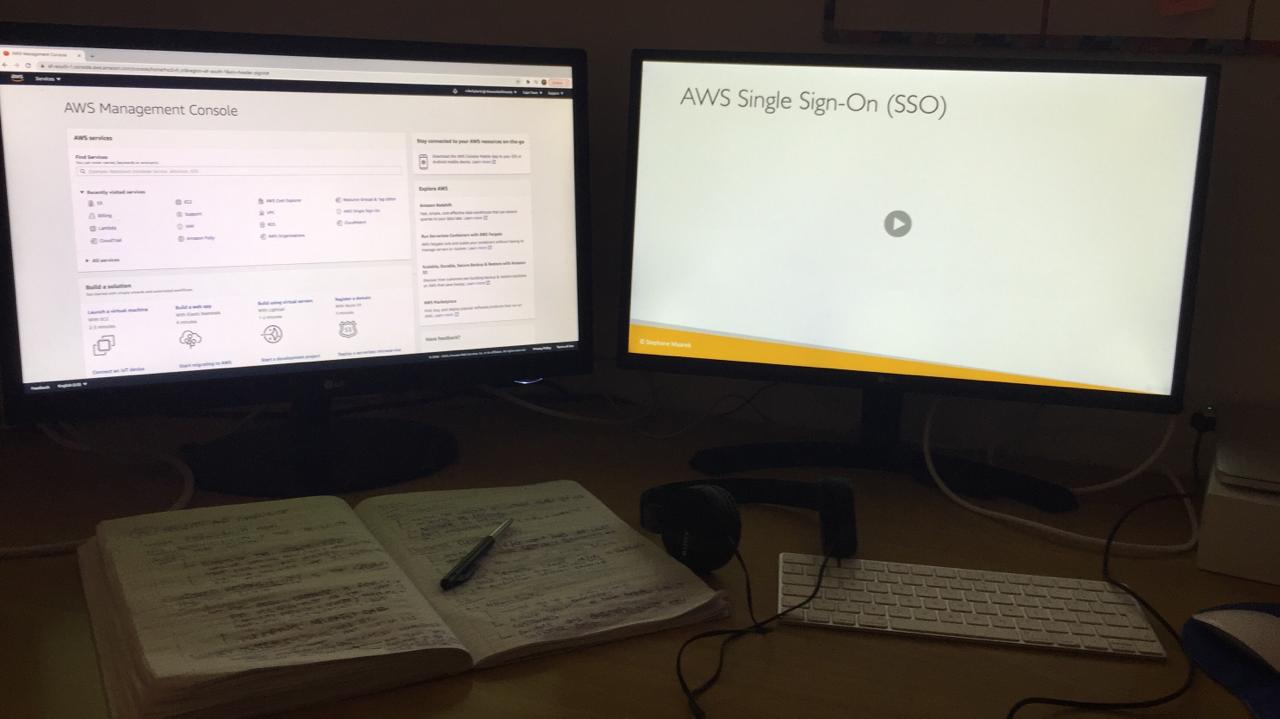
Like many engineers, I enjoy learning something new. And I’m sure like many engineers, I don’t particularly enjoy learning in an environment of pressure that an examination deadline presents. This method of learning demanded that I structure a schedule.
However, before I even booked the exam, I began researching the basics of AWS. During my brief interaction with AWS at work, I understood the very elementary aspects of a VPC, regions and availability zones, security groups, IAM, ec2 instances etc. but I felt that before I even started officially studying for the exam, I needed to spend some time on these fundamentals.
The AWS re:Invent presentations on the AWS Events YouTube channel were a great source of official information. I found the concepts, especially the basics, are explained extremely well by competent speakers. I watched a number of the presentations, focusing on fundamental concepts. I then began practicing what I had learnt on my own account. As I began feeling more comfortable with the concepts, I began blogging about what I was learning. This helped strengthen my overall grasp of the basics.
Eventually I decided to book the exam and give myself about a month and half of study time before I wrote. There are number of good free resources online for the course. Andrew Brown offers a great four hour course on YouTube and AWS also offers a good free course. I decided to go with Stephane Maarek’s Ultimate AWS Certified Cloud Practitioner – 2020 course on Udemy as well as his practice exams course. Both were very reasonably priced, and his reviews were positive.
The schedule that I devised for studying was very basic. I had about 5 weeks to prepare and broke it up into the following structure:
Week1: Read the recommended white papers for the exam.
Week2 – 3: Complete the Udemy course, following all examples while taking notes.
Week4 – 5: Complete all six practice exams multiple times right up to the day of the exam, working on my weak areas.
For this entry level exam, this schedule and time I allocated was sufficient. I may change my strategy for the more challenging associate and professional exams in the future.
Stephane Maarek’s Ultimate AWS Certified Cloud Practitioner – 2020 course
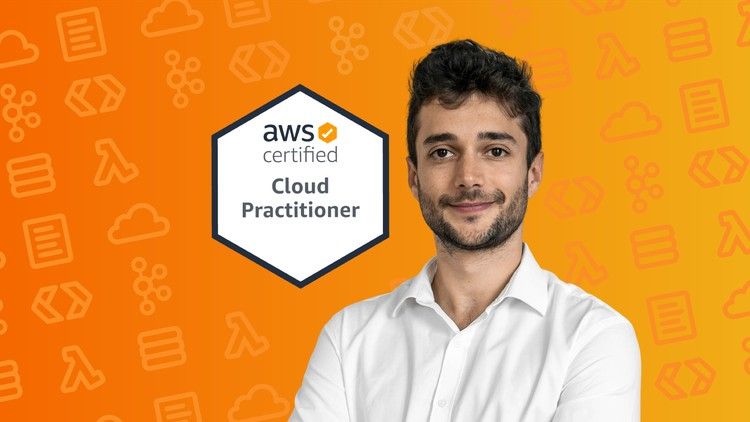
This was the first course of Stephane’s that I had utilized and completed. There are number of AWS courses on Udemy, but Stephane’s rating was mostly in the higher tiers and pretty much all of his reviews were positive. These factors convinced me to go with his material.
This particular course is extremely cost effective for the level of training it supplies. English is not Stephane’s native language and possibly for some this maybe an issue, but I did not find this an impediment for him to convey the necessary concepts.
His style of delivery is light but professional. He comes across as modest and confident with very little, if any, unnecessary attempts at humor, which at best, I find awkward and at worst, distasteful. That’s my own personal preference, others may enjoy that kind of thing.
Where the course really shines, as one would expect it to, is the material. It covers all of the necessary content outline and does so in short, concise and manageable sections. Where necessary, he covers practical examples where the student is able to follow along to get a deeper understanding of the particular material being covered.
Another excellent addition is the practice exams. In the course itself, Stephane supplies one practice exam but has a partner course that is exclusively practice exams. This partner course contains five practice exams. To be honest, I found the practice exams more challenging than the official AWS exam, however this could have been because the quality of the practice exams was excellent and I completed all of them repeatedly, focusing on my weak points. I highly recommend Stephane’s practice exam course as it gave me the confidence that I was fully prepared when sitting for the official exam.
My next attempt will be the Certified Sysops Administrator and I’ve already purchased Stephane’s course in preparation.
The Exam Experience
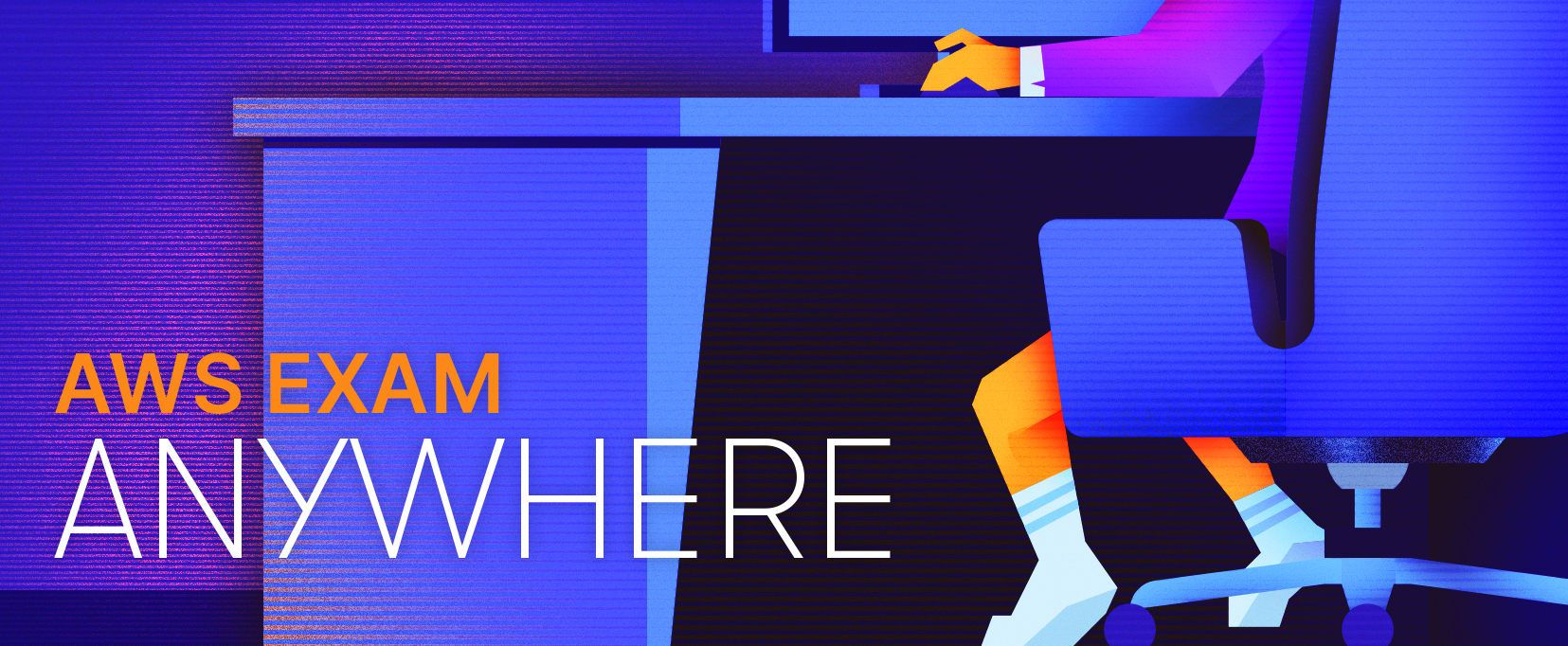
The AWS Training and Certification Portal is the place to manage your training and certification activities. If you already have an Amazon account (not AWS), you are able to login with those credentials. If not, you are able to create an account from this portal.
Previously, the AWS Cloud practitioner certification was the only certification that was offered by online proctoring but in March of 2020, AWS announced that it was possible to take all the AWS certifications online.
For AWS certifications, one can choose between two online proctoring organizations: Pearson VUE and PSI. I opted for Pearson VUE for no particular reason. The two options are available when scheduling exams.
I found scheduling the exam trouble free and appreciated the almost unlimited schedule dates and times one can choose from. I chose to schedule my exam late afternoon on a Friday.
The Cloud Practitioner exam costs $100, which is moderately affordable. Once one has scheduled an exam, you will receive payment and exam confirmation emails from the proctoring organization you chose, in my case Pearson VUE.
It’s recommended that you read the exam confirmation email thoroughly, ensuring you understand exactly what is required pre-exam and on the day of the exam. You will be required to review your system requirements. This means that the machine you are doing the exam on meets the minimum requirements. This will mainly be about what software version you are running. The test can only be taken on Mac or a windows machine. You will also be required to run a systems test. This involves downloading the proctor software and performing a one-question test exam to ensure that your system is to spec.
A very important recommendation is that you perform the exam on personal computer i.e., not a computer supplied to you by your employer. The reason for this is that any software installed and managed by your employee could negatively affect the proctoring software. I experienced this when attempting the very first time. The anti-virus software on my employee supplied computer prevented the proctoring software from initiating the exam. This was extremely frustrating as the issue did not show up in any pre-exam tests. To be fair, the recommendation to use a personal computer was clearly outlined in the confirmation email. This set me back a week and Pearson VUE were gracious enough to refund me. I rebooked for a week later and managed to keep my motivation. To avoid this experience, use a personal computer and needless to say, ensure all antivirus software is disabled for the duration of the exam.
On the day of the exam, one should repeat the system test on the computer you will be doing the exam on and in the same location you will be in for the exam. This is important to ensure there are no issues with your internet connection or other unpredictable circumstances. You will be required to supply identification before the exam. It’s important to note that the name that appears on your identification should be the exact name as the one you used to book the exam.
You will be expected to use your webcam to show the room you are in for the exam. You will need to take pictures of all angles of the room and the exam adjudicator my ask you to do a live scan of the room with the webcam as well. They will also ask you to show your wrists to ensure no watch is present. Once you have supplied all of these requirements, the exam will be initiated.
The Cloud Practitioner exam is 90 minutes and consists of 65 multiple-choice questions. It’s important to read each question carefully ensuring you understand exactly what is being asked. It’s also important to be cognizant of how many answers each question requires. Some questions require multiple answers and if you only give one correct answer, the question is marked incorrect. This is where practice exams come in handy. This may appear obvious, but in the pressure of the exam it’s easy to forget the basics. The question overview does, however, indicate which questions are not 100% complete but this is not that intuitive.
During the exam, you are able to mark questions that you did not answer. It’s important to take the time to review each and every question once you have completed all of them. Not only the ones you have missed. Don’t rush the exam. Use all the time available.
On completion of the exam and once you have submitted you answers, you will be told whether you have passed or failed. You will not be given your score. This will be emailed to you within 5 or 7 days. Your score will be a number from 100 to 1000, 1000 being 100%. To pass, you need to score 700 or higher.
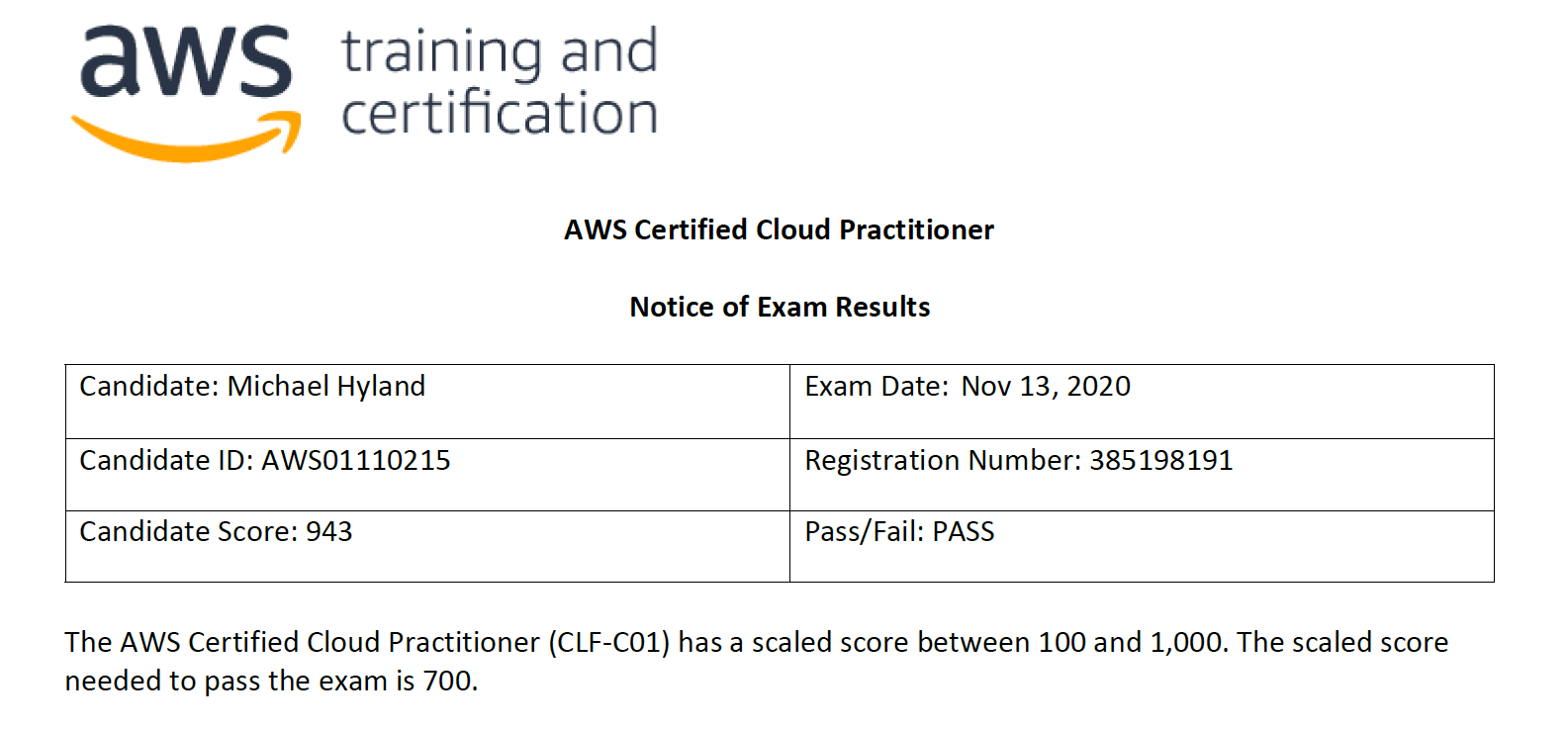
The build up to and the exam experience itself can most definitely be stressful but if you are confident in your preparation, it can be a highly satisfying experience and one you can be proud of.
Conclusion
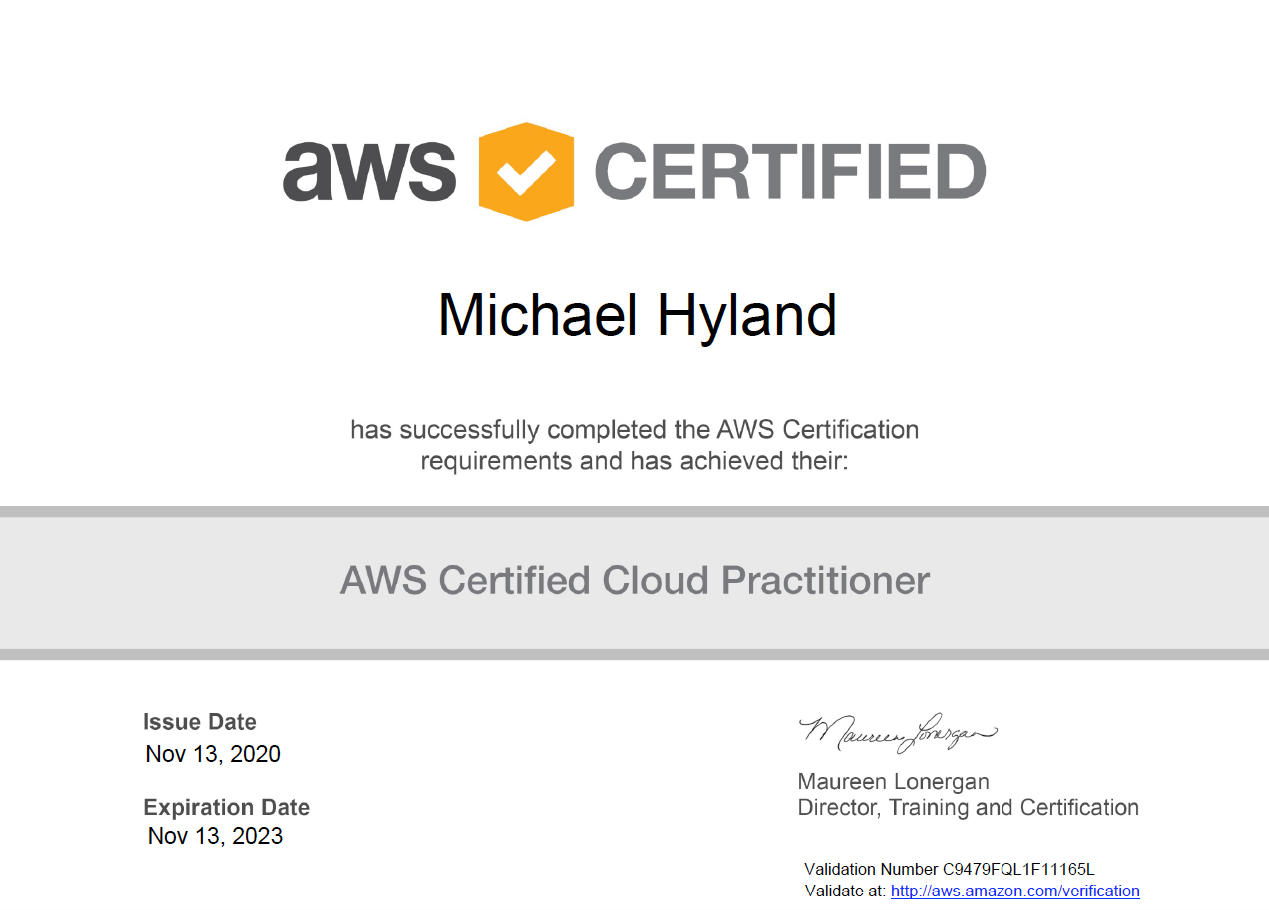
My decision to study for and write the AWS Cloud Practitioner exam was twofold. I could have chosen to attempt an associate or professional certification first but before doing these more challenging associate and professional exams, I wanted to be comfortable with the very basic AWS fundamentals. I also wanted to be comfortable with the actual exam experience. Studying for and writing the the Cloud Practitioner exam, accomplished both of these requirements and has given me confidence to pursue the associate and professional certifications that AWS has to offer.
